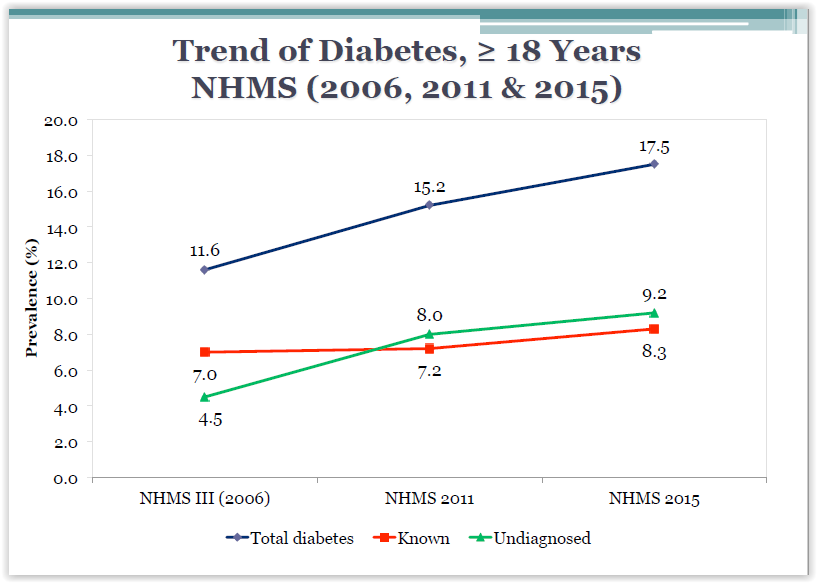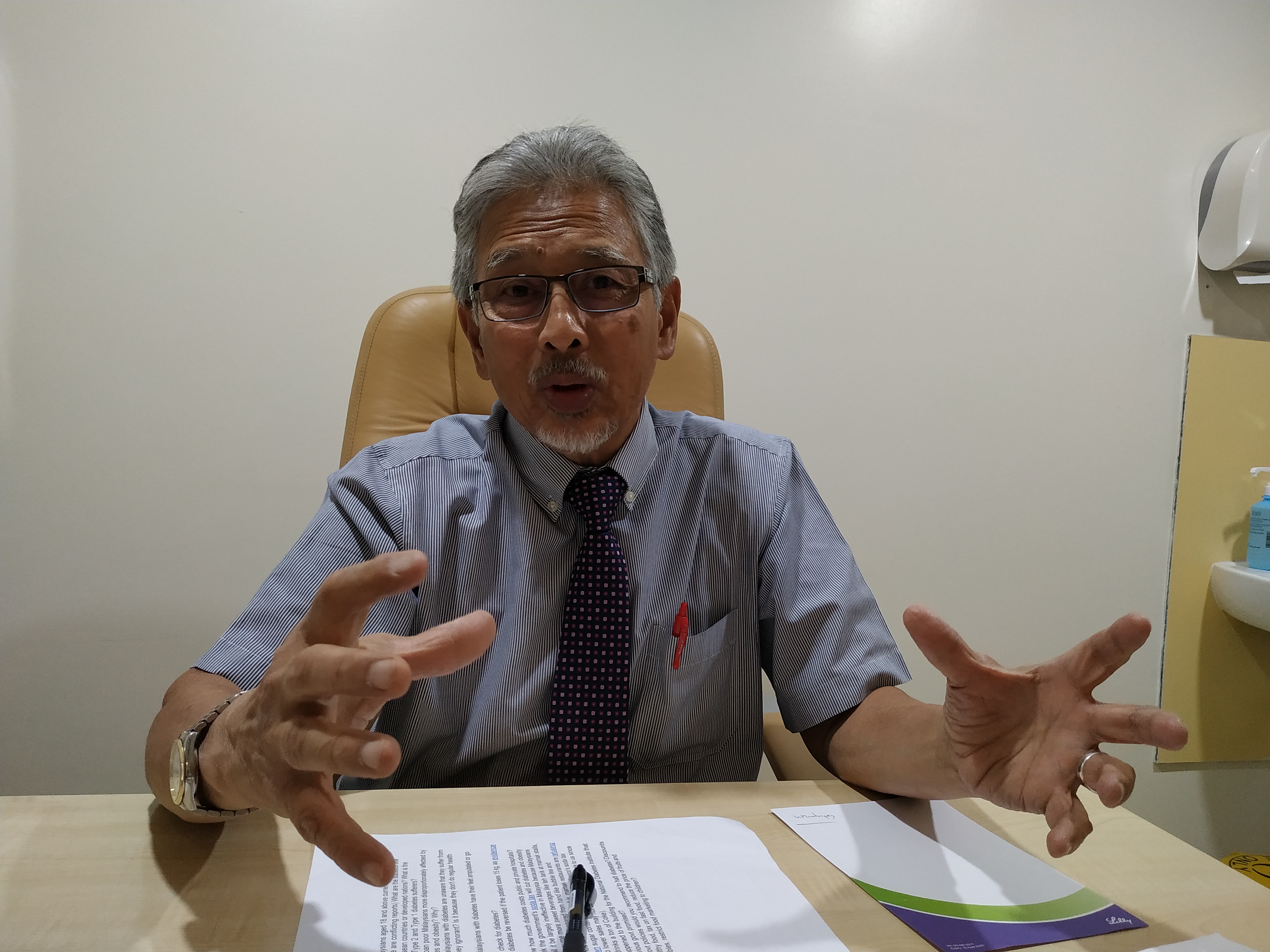PETALING JAYA, March 14 — An endocrinologist has suggested a tax on white rice, fast food, and other high glycemic index (GI) foods, even as almost one out of five Malaysian adults suffers from diabetes.
Dr Anuar Zaini Md Zain, consultant endocrinologist at Beacon Hospital, said the tax levies on high-GI food — which is carbohydrate-containing food that raises blood sugar quickly — could be diverted to vegetable growers and companies to make healthy food cheaper, besides building parks and affordable gyms.
“Why can’t we create a low glycemic index food industry, like the halal industry? Have low glycemic index certification,” Anuar Zaini told CodeBlue in a recent interview at Beacon Hospital here.
“Make healthy food affordable”
Foods that contain carbohydrates have different GI levels depending on how fast the body converts carbs into glucose. Fats or meats are not on GI lists because they do not have carbs.
The three GI ratings are low (55 or less), medium (56 to 69), and high (70 or more). Low-GI foods are preferred because they are slowly digested and absorbed, leading to a smaller and slower rise in blood glucose compared to foods with higher GI values.
Low-GI foods include rice like basmati and brown rice, whole grain bread, grains like quinoa, legumes, fruits like apples and pears, non-starchy vegetables like carrots, cauliflower, and broccoli, rice noodles, and pasta.
Foods with high GI include white rice, white bread, potatoes, instant noodles, fast food like burgers, soft drinks, desserts and candy.
“Brown rice and basmati rice have very little starch. Yet basmati rice is the most expensive and white rice is the cheapest,” Dr Anuar Zaini said. “The more healthy the food is, the more expensive it is.”
Dr Anuar Zaini, who is also professor of medicine at Monash University, said fast food should be taxed because it caused childhood obesity.
He also urged the government to impose punishments on civil servants, the police, and army like giving them smaller bonuses if their body weight passed a certain level.
“They’re eating, eating, and eating,” said Dr Anuar Zaini. “When you’re overweight, you become lazy and productivity goes down.”

According to the National Health and Morbidity Survey 2015, 3.5 million adults aged 18 and above in Malaysia had diabetes, which was 17.5 per cent of the adult population. More than half of them, about 1.8 million people, were unaware they had the disease. The 17.5 per cent prevalence in 2015 rose from 11.6 per cent in 2006.
Dr Anuar said more than 98 per cent of diabetes cases in Malaysia were Type 2, which is often described as a lifestyle disease where the body is ineffective at using the insulin the pancreas produces, compared to Type 1 diabetes where the immune system destroys cells in the pancreas that make insulin.
The 2015 survey also showed that hypertension, or high blood pressure, affected about one out of three adults aged 18 and above at 30.3 per cent, or 6.1 million people in Malaysia. More than half of them, or 17.2 per cent of the adult population, were undiagnosed, compared to 13.1 per cent whose hypertension was known.
The 2015 survey also revealed that almost half of the adult population in Malaysia aged 18 and above (47.7 per cent) or 9.6 million people had high cholesterol. Four out of five of them were ignorant about their condition.
Malaysians have also been gaining weight over the years. Almost half of the adult population in Malaysia aged 18 and above were overweight and obese according to the 2015 survey. About one of three adults were overweight (30 per cent), while 3.3 million adults were obese (17.7 per cent).
Self-declare you are at risk for diabetes
Since diabetes presents no symptoms, Dr Anuar called on Malaysians to “self-declare” that they may have diabetes if they had all these risk factors: overweight or obese, high cholesterol, high blood pressure, and family history of the disease.
“Self-declare and get it tested,” he said. “Everyone must ask — am I at risk?”
He also urged the government to focus its diabetes strategy on prediabetic people, who are those with higher blood sugar than normal but not high enough yet to be diabetic.
According to him, when fasting, the blood sugar level is between 5.7 and 6.9 mmol/l for prediabetes. Diabetes is 7 mmol/l or more, while normal blood sugar levels are below 5.7 mmol/l.
“At the moment, we’re not tackling these (prediabetic) people,” said Dr Anuar. “Every year, 10 to 20 per cent are converted into undiagnosed diabetes.”
He said those with prediabetes can avoid getting diabetes if they change their lifestyle, such as by eating a healthier diet and exercising, besides checking their blood sugar levels every six months.

Dr Anuar cited a 2000 study by the US-based Diabetes Prevention Program (DPP) Research Group that found a whopping 58 per cent reduction in diabetes incidence caused by lifestyle intervention, where participants went through a six-month weight loss programme that included diet control, exercise, and even counselling, coupled with regular supervision post-programme. In contrast, the metformin drug treatment only resulted in 31 per cent reduction.
Dr Anuar said having abnormal blood glucose levels for five years, without necessarily being diagnosed with diabetes, could lead to complications like heart attacks.
“They come in with heart attacks not knowing they have glucose abnormality,” said Dr Anuar, adding that passing a lot of urine and weight loss were late symptoms of diabetes.
He also pointed out that patients presenting with diabetes alone were rare, but “all who died of heart attack are diabetic.”








